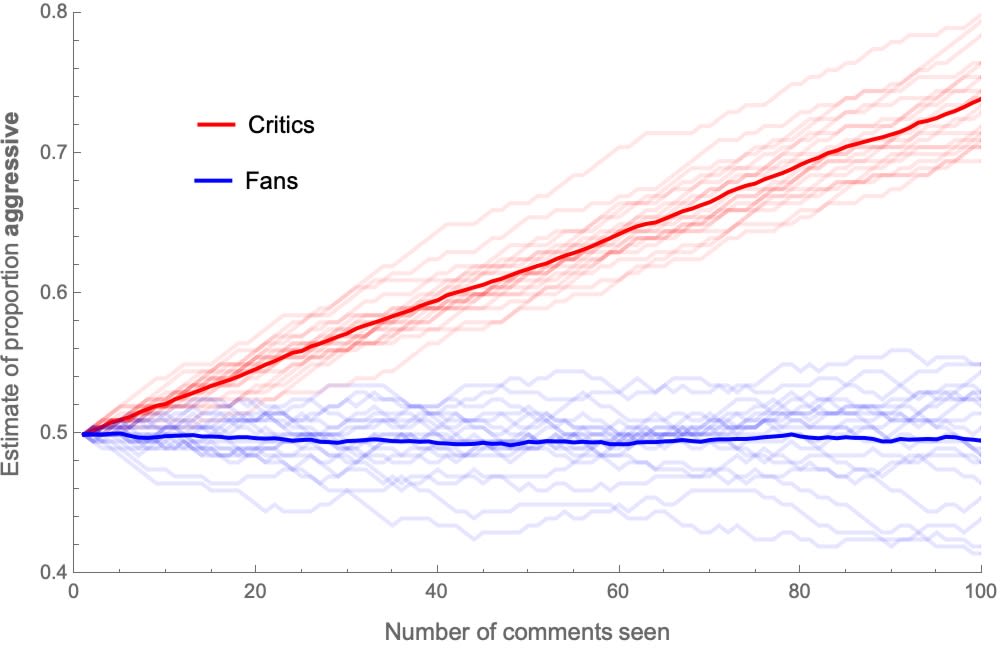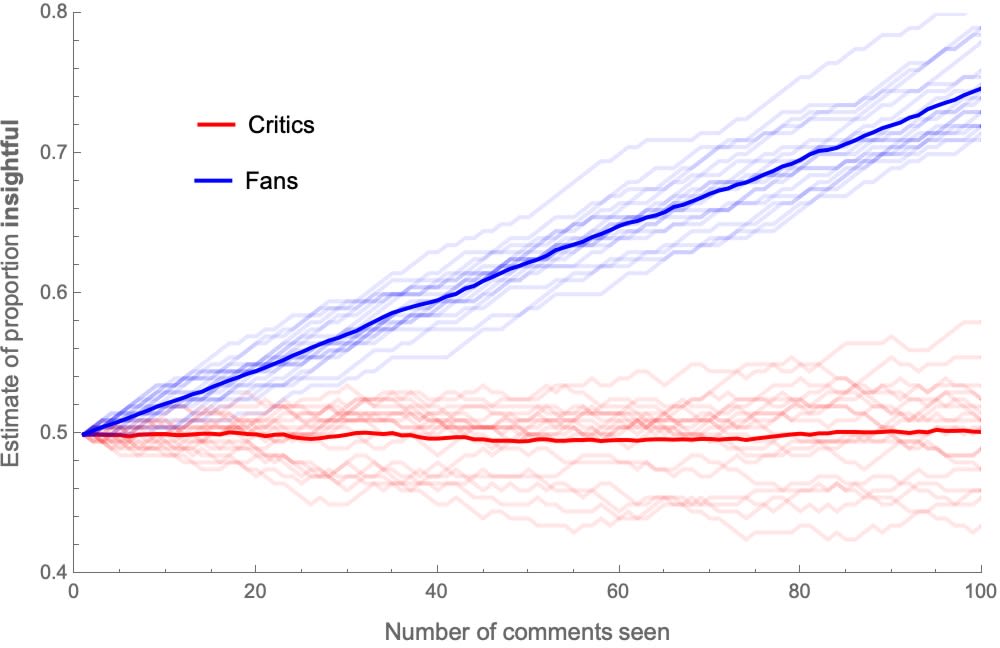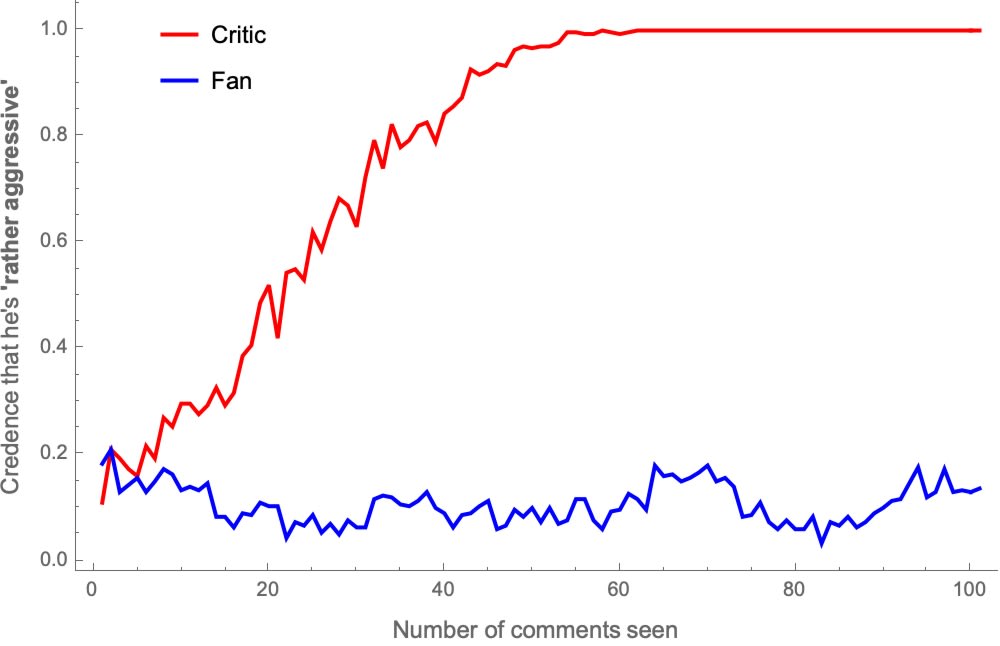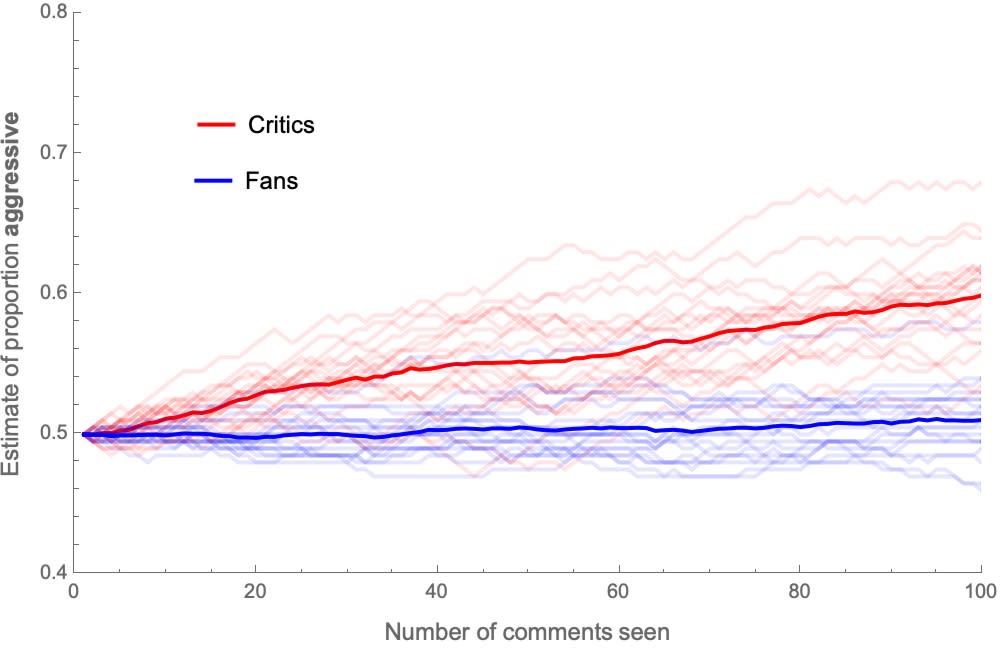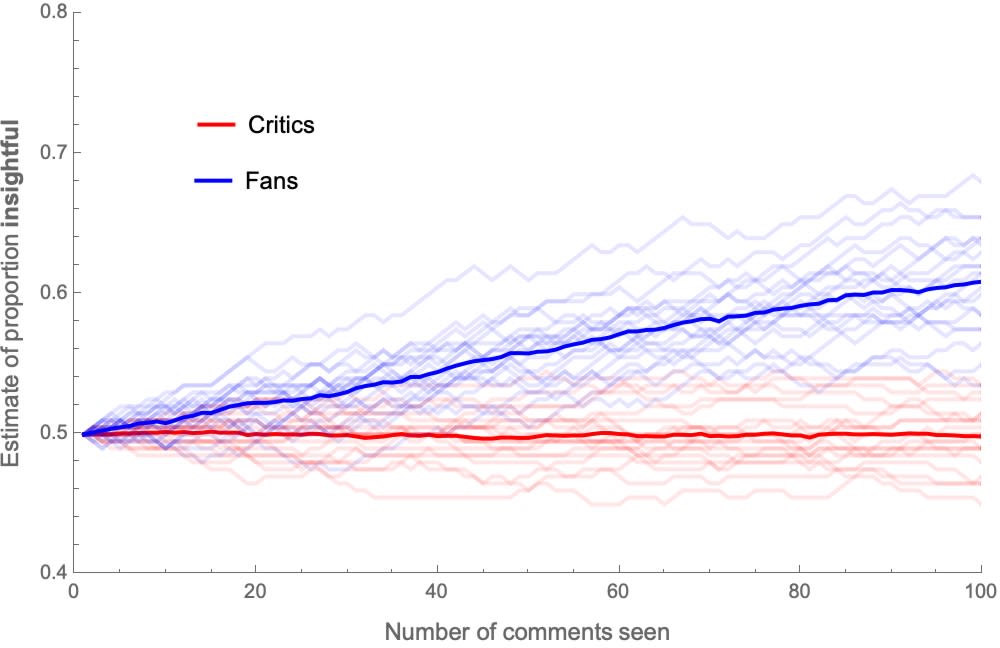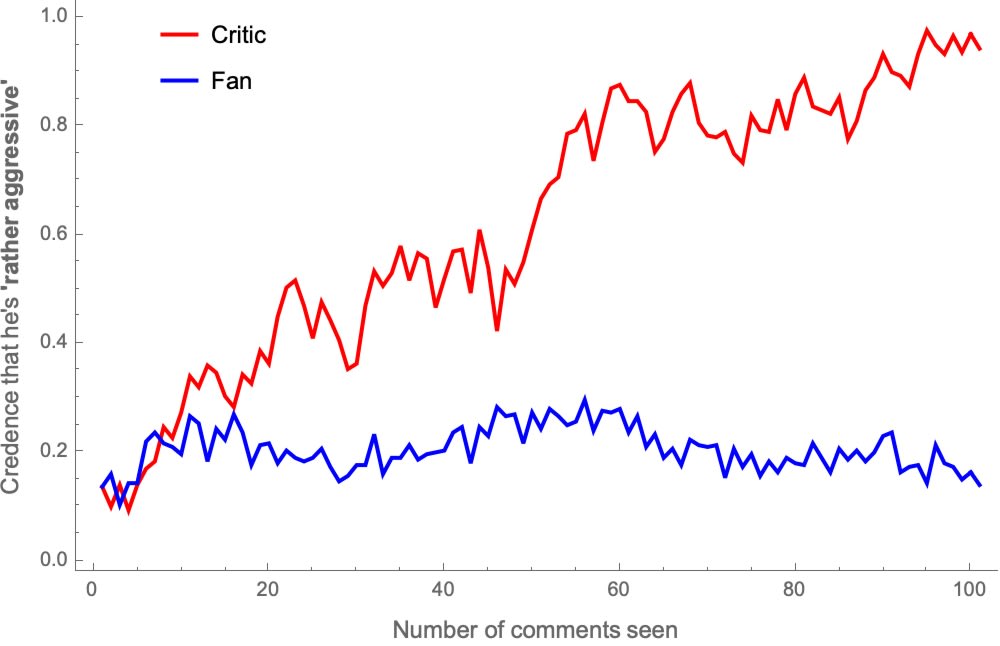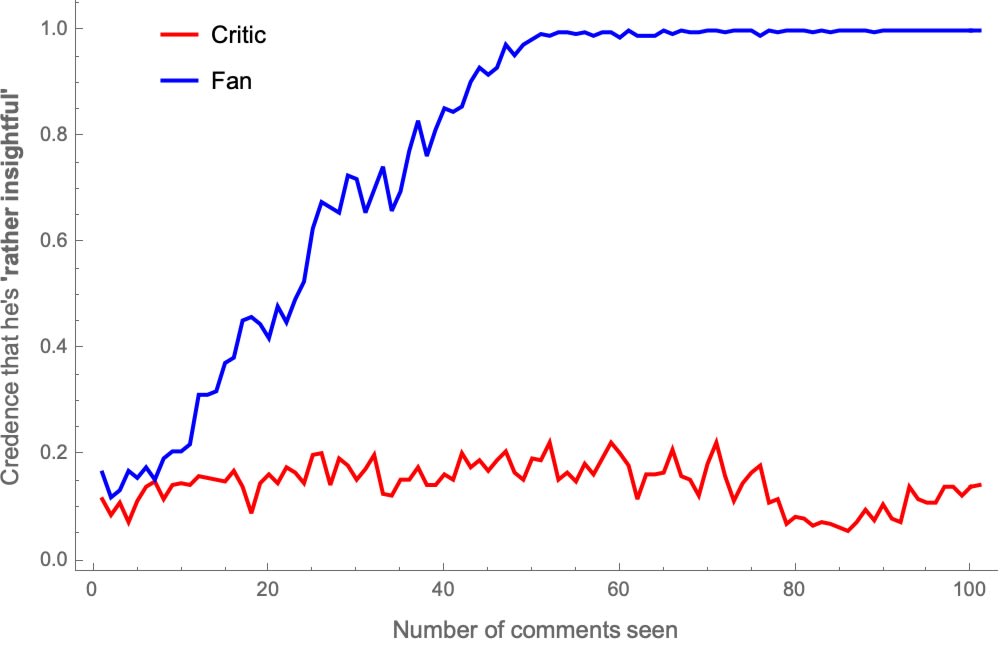Amazing post. I already knew that filtered evidence can lead people astray, and that many disagreements are about relative importance of things, but your post really made everything "click" for me. Yes, of course if what people look at is correlated with what they see, that will lead to polarization. And even if people start out equally likely to look at X or Y, but seeing X makes them marginally more likely to look at X in the future rather than Y, then some people will randomly polarize toward X and others toward Y.
The video you linked to was really interesting! I got TWO big lessons from it!
First, I learned something about ambiguity of design intent in designed environments from going "from my subjective framing to the objective claims about the scene" (where I misunderstood the prompt and got a large list of wrong things and didn't notice a single change, and later realized that almost all the changes preserved the feature of misdesign that had been salient for me).
Second, I learned a lot from "trying to use the video's frame to create a subjectivity that could represent what really happened in a subjectively coherent trace" by watching over and over while doing gestalt awareness meditation... and failing at the meditation's aims... until I stopped to reverse engineer a "theory of what happened" into a "method of observation".
I shall unpack both of these a bit more.
Initially, the instructions were
...spot the items in the room that are a little "out of place".
On my very first watch through I was proud of having noticed all the things not in parentheses: (1) the desk in the left corner (where the ball disappears, it turns out) is horribly designed and had a bent leg, (2) the ugly ceiling tiles (where two tiles entirely disappearance) violate symmetry because one of the four lights has a broken cover with the reflectors showing, (3) the couch is untidy with cloth laying over the edge (what was hanging over changed), (4) the desk is messy (but the mess lost a wine bottle), (5) the coffee table has objects VERY CLOSE to the edge, where they will be very easy to bump off and cause a tragedy if someone bumps them while moving with normal lack of caution (though the cup changed from black to white and the candle changed into a bowl).
As a proud autist, I'm happy to report that these are all flaws. I followed the instructions reasonably and collected a set of things that I could have been instructed to have collected! <3
All the flaws I found persisted from the beginning to the end, and they basically count as "things out of place" in the normal reading of that concept (like to an ergonomic engineer, or a housekeeper, or whatever).
It would be interesting to design another stimuli like this video, and have the room be absolutely tidy, with flawless design and a recent cleaning and proper maintenance of the ceiling, and see if it replicates "as much" despite there being no "latent conceptual distraction" of a reasonable set of "room flaws" to find that had been paired with ambiguity about "what counts as a flaw" in the instructions.
On my second and third watches, I knew what changes to look for but I had not yet read the video title to understand that gradual change blindness was the key concept.
So I just queued up the set of things to be "sensitive to motion about" in my subjective attentiveness filters and waited for "the feeling of something in jerky motion, for me to resist doing an eye saccade towards" to hit my gestalt scene sense... and I got a couple of those!
However, the place they triggered was in the frame-to-frame jumps in the dithering of the "greyscale" of boring parts of the scene that weren't even "officially changing"!
Like dithering is, in some sense, a cryptographic hash of a scene and so my treating "something jumps as something worthy of salience" was only detecting jumps in places that were not carefully controlled by the stimuli designers!
Ultimately, the second thing I learned was how to apply a top-down expectation of change into my observing loop.
The thing that finally got me to this place was starting with a list of things that I knew had changed, and then running a rough branch and bound algorithm running a mousing-over along the timeline, and looking at the thumbnail, seeking ANY of the changes showing up as a "jerky pop" as they changed from one thing to the next thing.
This is what proved visually to me no such pops existed. Logically then: the changes were nearly continuous.
The only "pop(!) that looks like a change" that I could then find was scrubbing very fast, so the sped up video finally gave me things that looked like a fade.
What I realized is that to get a subjective sense of what was really happening in real time, I had to buy into the idea that "motion detection will fail me" and I had to make an explicit list of features of "where the scene started" and "what the designers of the scene's shift planned to happen over the course of the shift" and keep both concepts in mind actively during all perceptual acts.
Then, moment to moment, I could flick my attention around to extract, with each saccade of my eyes, a momentary impression like:
- "the dithering flickered and the cup on the edge of coffee table is 10% of the way from white to black (which is part of the plan)"...
- "the dithering flicked and the exercise ball is 20% disappeared (which is part of the plan)"...
- "more flickering and now the candle/bowl on the coffee table is 30% shapeshifted (which is part of the plan)"...
- "the portraits on the shelves are 40% moved from low to high (which is part of the plan)"... and so on.
Like here's "the untidy couch object at a fade of ~60% white, ~40% blue" which can be seen and fitted into the expectation of the overall shift that is being consciously perpetrated against your perceptual systems by the stimuli designers:

In the frames before and after it is slightly more or less faded and your visual motion detectors will never see it POP(!) with a feeling of "its like a frog jumped, or a cat's tail writhed, or a bird flew by".
It will always just seem like a locally invalid way for things to be, because it isn't something your inner mental physics simulator could ever generate as a thing that physics does... but also over time the video effect will have one plausible thing slowly be more and more ghostly until it is gone. From valid, to invalid but seemingly static, to valid again.
I think it was critical for this effect that the whole video was 53 seconds long. Auditory working memory is often about 4 seconds long, and I bet video working memory is similar.
The critical thing to make these kinds of "change-blindness mechanism proving stimuli" is probably to make the change "feel invisible" by maintaining a simple and reasonable "invariant over time".
You would want no frame-to-frame visual deltas that are (1) easily perceptible in a side by side comparison (due to low level logarithmic sensitivity processes that science has known about since ~1860) and (2) closer than 5 seconds in time such that the brain could keep lots of detail about any two images (a before and after that are distinct) because the brain will have had more images in between (such as to cause our visual change buffer to overflow before any detector-of-change-classifier actually fires and triggers a new "temporary subjective consensus block" in the brain's overall gestalt consensus summary of "the scene").
...
So that's really interesting! I can instantly imagine ways to transpose this tactic into PR, and management, and politics, and finance, and other domains where the goal is explicitly to gain benefits from hurting people who might have naively and implicitly trusted you to not hurt them through deception.
I bet it will also help with the design of wildly more effective slow missiles.
...
Humans are so fucked. The future is probably going to feel like Blindsight unless our AI overlords love us and want our subjective reality to make sense despite our limitations. "Daily experience as an empathically designed UI for the disabled"?
...
Defensively speaking, (like if there even is any possible defense and we're not just totally doomed) maybe the key principle for the design of systems of defense against the likely attacks would involve archiving obsessively and running offline change detectors on exponentially larger timescales?
It reminds me a bit of Dune "shield fighting": slow on the offense, fast on the defense... but for sense-making?
The problem of evidence is only one of the problems: there is also the problem of hypotheses.
The fact that Bayes can be shown to work in toy problems involving dice and coins, but that doesn't mean that it can work in cases where the hypothesis space isn't finite or known --and it is neither in science. Realistic Bayesians dealing withr p realistic problems wil not be able to .think ofof every hypothesis. Newton didnt think of General Relatively It is no good having the right rule to update a hypothesis on evidence, if you don't have the hypothesis. Realistic Bayesians need to exchange information about hypotheses in order to and up for their shortcomings.
I've been thinking about something similar, and might write a longer post about it. However, the solution to both is to anneal on your beliefs. Rather than looking at the direct probabilities, look at the logits. You can then raise the temperature, let the population kind of randomize their beliefs, and cool it back down.
See "Solving Multiobjective Game in Multiconflict Situation Based on Adaptive Differential Evolution Algorithm with Simulated Annealing" by Li et. al.
